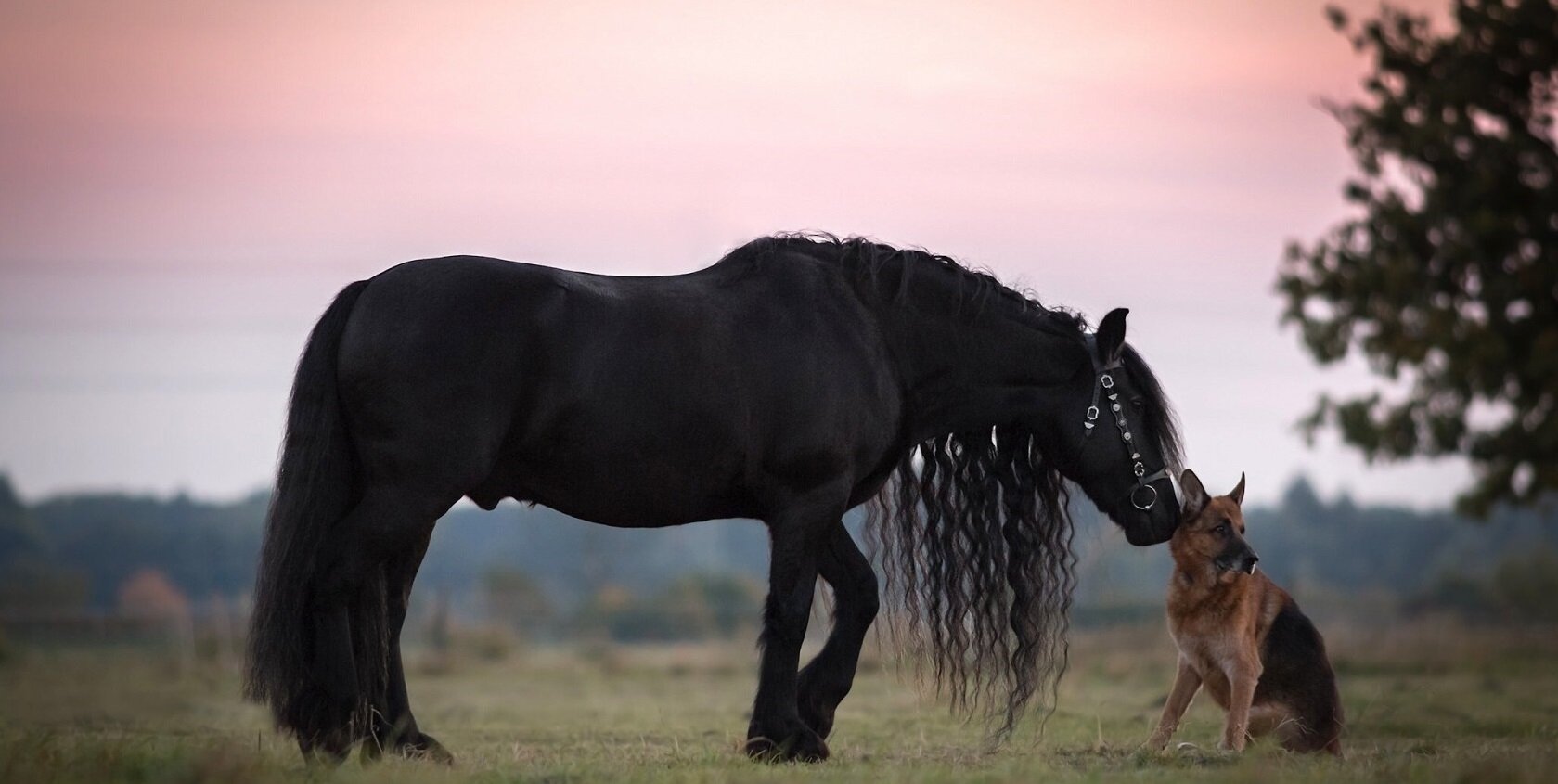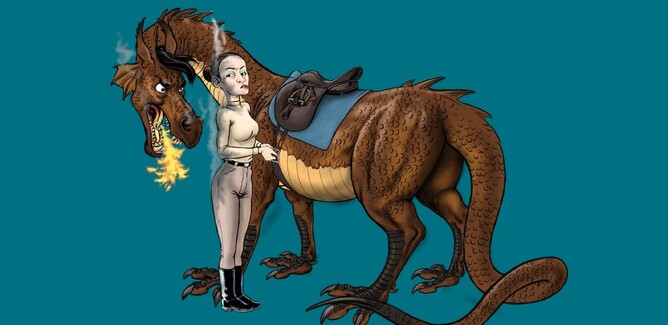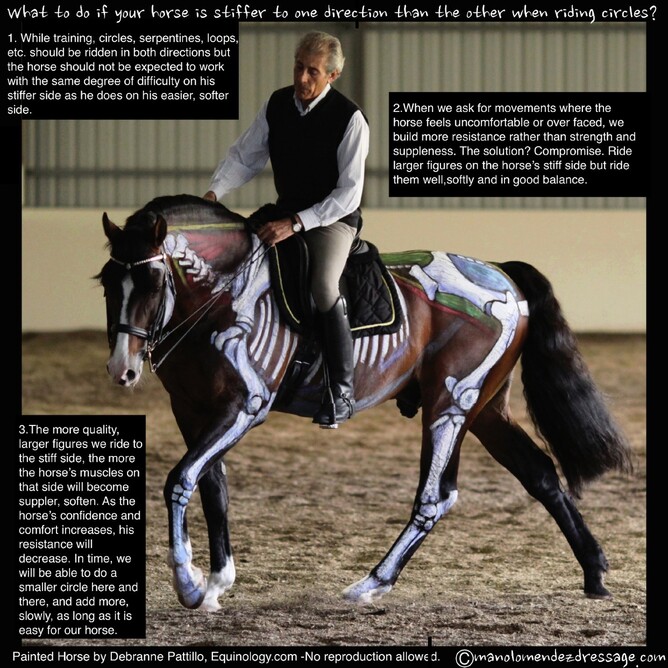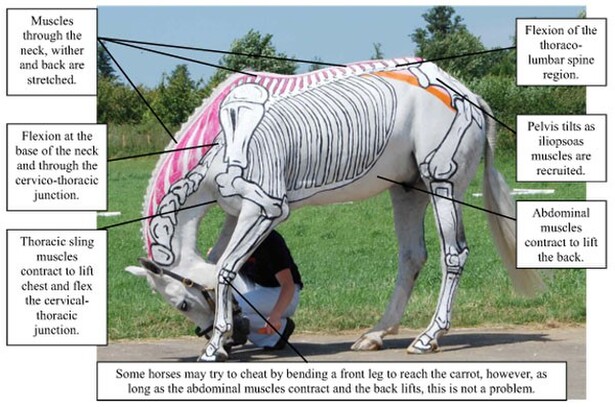Girthiness" can be caused by painful withers, which commonly result from ill fitting saddles, from girth galls (sores) and from abnormal sensitivity of the chest behind the elbow.
Your horse may be telling you he doesn't like the girthing process because either it or his saddle is causing him pain.
- Make sure that your tack fits properly and is placed correctly on his back. Saddle placement: Incorrect saddle placement is the most common cause. Too often, the saddle is put on too far forward, so the girth passes right behind the elbow. Girth pressure there pinches the muscle and provokes spasms.
Saddles that are too narrow or too wide at the wither and saddles that grip high in the wither should be avoided.
- Pain induced. Pain leads to avoidance behaviour, such as biting when girthed up, stiffening with leg pressure, inflating the chest and refusing to go forward. Pain also increases anxiety and fear, which often lead to other undesirable behaviour. The result is often the growth of a complex set of behavioural patterns, which need to be re-trained, once the pain has been resolved.
- The fix: Acupuncture is very effective in settling down the affected area and muscle knots, and so the combination of therapies such as myofascial release gives an enhanced result.
- Mounting from a block, or some other support, is important for the health of the wither area, no matter how light the rider is.
- Consider all girths that are available in straight styles, fashioned like a belt, or with anatomical contours that are designed to provide room for a horse's elbows during movement. Some types of girths are intended to relieve pressure on the horse's sternum.
The most important aspect about the shape and material of your girth is that it works well with your horse's unique conformation, movement and skin to distribute pressure evenly along its barrel. It needs to work with the horse, moving ever so slightly with the hair (horizontally) and not against it (vertically) in such a way as to cause rubbing or chafing. If a girth is too narrow for a horse, it concentrates pressure on a narrow band of its barrel and that pressure can be uncomfortable. Using a broad, cushioned girth, that has 10-15cm of elastic at each end, can increase you horse's comfort and reduce the inflammation. Avoid over tightening the girth – easy to do with elastic.
Elastic ends make the girth fastening process easier, and provide some flexibility and comfort for the horse as his ribcage moves during exercise. Some dressage girths have built-in elastic panels rather than elastic ends.
- Work: Performing the same maneuver over and over cantering endless circles, for example, overdoing lengthening's can lead to tightness in the girth area, as well as in other muscles. The fix: Vary the work, changing gaits and directions often.
- Footing: Working in deep footing tires your horse and contributes to muscle tightness. The fix: Limit the amount you do in deep footing
- "Shoulder in" exercise is the most useful exercise that can be used to get horses to better flex their rib cage, and can help to maintain ribcage flexibility once pain has been resolved.
- Stretches: encouraging your horse to stretch its topline with exercises that ask the horse to pick up the front of its chest and bend its neck around out wide can be beneficial. Stretches ease the tension that contributes to the pain and dysfunction. The neck exercise that involves the horse nibbling a carrot between its legs also helps to ease this tension. Stretching out each foreleg is useful for the foreleg component of the syndrome.
Stretches should not be attempted until your horse is warmed up and should be done gently.
- Hidden problem: Sometimes the real cause isn't at the girth area at all. Your horse may have a problem in his lower leg or foot, for example. He tightens the posterior pectoral to protect his sore leg by limiting the range of motion. (This is called "protective splinting.") Then the muscle goes into spasm. In cases like this, the knot often doesn't resolve quickly. Chronic foot problems, hoof imbalance or favouring one leg, pelvic twists and falls, bad teeth, girths, saddles, bits, riders may cause the problem to return.
- The fix: No simple fix here; a veterinarian and/or farrier also needs to assess your horse.







